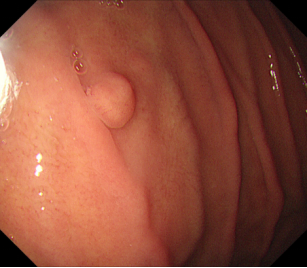Gastrointestinal (GI) polyps are small growths that develop on the lining of the digestive tract, primarily within areas such as the stomach, intestines, and colon. These polyps are relatively common, especially in adults over 50. Although many GI polyps are benign, some can progress into cancer, particularly polyps found in the colon. Understanding the types, causes, symptoms, diagnosis, and treatments for GI polyps can aid in early detection and improve patient outcomes.
1. What Are Gastrointestinal Polyps?
A gastrointestinal polyp is an abnormal growth of tissue projecting from the lining of the digestive tract. They can vary in size, shape, and location, affecting different parts of the GI tract, including the esophagus, stomach, small intestine, and colon. Polyps may be flat, sessile (attached directly to the lining), or pedunculated (attached by a thin stalk). The majority of polyps are non-cancerous, but certain types have a higher potential to develop into malignant tumors over time.

2. Types of Gastrointestinal Polyps
Several types of polyps can form in the GI tract, each with unique characteristics and cancer risks:
• Adenomatous Polyps (Adenomas): These are the most common type of polyps found in the colon and have the potential to develop into colorectal cancer. Adenomas are classified into tubular, villous, or tubulovillous subtypes, with villous adenomas having the highest risk of cancer.
• Hyperplastic Polyps: Generally small and commonly found in the colon, these polyps have a low cancer risk. However, large hyperplastic polyps, especially in the right side of the colon, may have a slightly increased risk.
• Inflammatory Polyps: Typically seen in people with inflammatory bowel disease (IBD), such as Crohn’s disease or ulcerative colitis, inflammatory polyps are usually benign but may indicate long-standing inflammation in the colon.
• Hamartomatous Polyps: These polyps are less common and can occur as part of genetic syndromes like Peutz-Jeghers syndrome. Though typically benign, they can sometimes increase the risk of cancer.
• Fundic Gland Polyps: Found in the stomach, these polyps are usually small and benign. However, in people taking long-term proton pump inhibitors (PPIs), an increase in fundic gland polyps can occur, though the cancer risk remains low.
3. Causes and Risk Factors
The exact cause of GI polyps isn’t always clear, but several factors can increase the likelihood of developing them:
• Genetics: Family history plays a significant role in the development of polyps. Genetic conditions like Familial Adenomatous Polyposis (FAP) and Lynch syndrome increase the risk of colorectal polyps and cancer at a younger age.
• Age: Polyps are more commonly seen in people over 50, with the risk of adenomatous polyps and colorectal cancer increasing with age.
• Lifestyle Factors: A diet high in red or processed meats, obesity, smoking, and excessive alcohol consumption have all been associated with an increased risk of polyp formation.
• Inflammatory Conditions: Chronic inflammation of the GI tract, often seen in conditions like Crohn’s disease and ulcerative colitis, can contribute to the development of polyps.
• Medication Use: Long-term use of certain medications, such as non-steroidal anti-inflammatory drugs (NSAIDs) and PPIs, may influence the risk of certain types of polyps.
4. Symptoms of Gastrointestinal Polyps
Most polyps, particularly small ones, are asymptomatic. However, larger polyps or polyps in certain locations may cause symptoms, including:
• Rectal Bleeding: Blood in the stool can result from polyps in the colon or rectum.
• Change in Bowel Habits: Larger polyps may lead to constipation, diarrhea, or a feeling of incomplete evacuation.
• Abdominal Pain or Discomfort: Although rare, some polyps may cause mild to moderate abdominal pain if they obstruct part of the GI tract.
• Anemia: Polyps that bleed slowly over time may result in iron-deficiency anemia, leading to fatigue and weakness.
Since symptoms are often subtle or absent, routine screening, especially for colorectal polyps, is crucial for early detection.
5. Diagnosis of Gastrointestinal Polyps
Several diagnostic tools and procedures can detect GI polyps, particularly in the colon and stomach:
• Colonoscopy: A colonoscopy is the most effective method for detecting and removing polyps in the colon. It allows for direct visualization of the lining of the colon and rectum, and any polyps found can usually be removed during the procedure.
• Upper Endoscopy: For polyps in the stomach or upper GI tract, an upper endoscopy is performed. A flexible tube with a camera is inserted through the mouth to visualize the esophagus, stomach, and duodenum.
• Sigmoidoscopy: This procedure examines the lower part of the colon, known as the sigmoid colon. It can detect polyps in the rectum and lower colon but does not reach the upper colon.
• Stool Tests: Certain stool tests can detect traces of blood or abnormal DNA markers linked to polyps or colorectal cancer.
• Imaging Tests: CT colonography (virtual colonoscopy) can create detailed images of the colon and rectum. Although it doesn’t allow for immediate removal of polyps, it can be a non-invasive option.
6. Treatment and Management
The treatment of GI polyps depends on their type, size, location, and potential for malignancy:
• Polypectomy: This procedure is the most common treatment for removing polyps during a colonoscopy or endoscopy. Small polyps can be removed using a snare or forceps, while larger polyps may require more advanced techniques.
• Surgical Removal: In rare cases where polyps are very large or cannot be removed endoscopically, surgery may be necessary. This is more common for polyps associated with genetic syndromes.
• Regular Monitoring: For patients with multiple polyps, family history of polyps, or specific genetic conditions, regular follow-up colonoscopies are recommended to monitor for new polyps.

Polypectomy snare
7. Preventing Gastrointestinal Polyps
While not all polyps can be prevented, several lifestyle adjustments can reduce the risk of their development:
• Diet: Consuming a diet rich in fruits, vegetables, and whole grains while limiting red and processed meats may help lower the risk of colorectal polyps.
• Maintain a Healthy Weight: Obesity has been linked to an increased risk of polyps, particularly in the colon, so maintaining a healthy weight is beneficial.
• Quit Smoking and Limit Alcohol Intake: Both smoking and heavy alcohol use are associated with an increased risk of GI polyps and colorectal cancer.
• Regular Screening: Routine colonoscopies are essential, especially for individuals over 50 or those with a family history of polyps or colorectal cancer. Early detection of polyps allows for removal before they develop into cancer.
8. Prognosis and Outlook
The prognosis for individuals with gastrointestinal polyps is generally favorable, especially if polyps are detected early and removed. While most polyps are benign, regular monitoring and removal can significantly reduce the risk of colorectal cancer. Genetic conditions associated with polyps, such as FAP, require more aggressive management due to the high risk of malignancy.
Conclusion
Gastrointestinal polyps are a common finding in adults, particularly as they age. While most polyps are benign, certain types carry a risk of becoming cancerous if left untreated. Through lifestyle changes, regular screening, and timely removal, individuals can greatly reduce their risk of developing serious complications from GI polyps. Educating the public on the importance of early detection and the role of preventive measures is key to improving outcomes and enhancing quality of life.
We, Jiangxi Zhuo Ruihua Medical Instrument Co.,Ltd., is a manufacturer in China specializing in the endoscopic consumables, such as biopsy forceps, hemoclip, polyp snare, sclerotherapy needle, spray catheter, cytology brushes, guidewire, stone retrieval basket, nasal biliary drainage catheter etc. which are widely used in EMR, ESD, ERCP. Our products are CE certified, and our plants are ISO certified. Our goods have been exported to Europe, North America, Middle East and part of Asia, and widely obtains the customer of the recognition and praise!
Post time: Nov-18-2024


